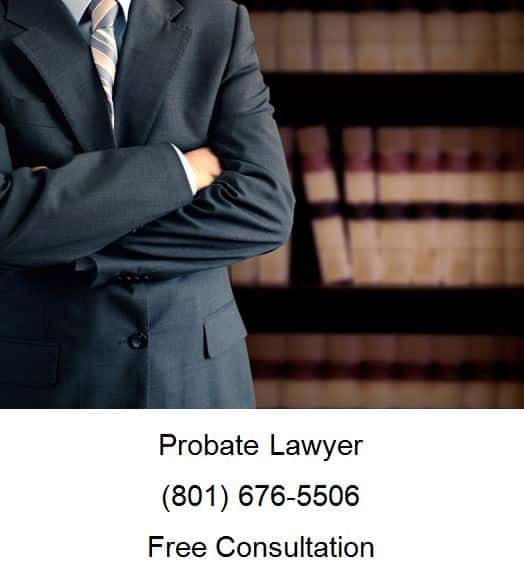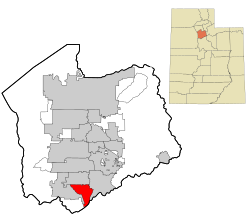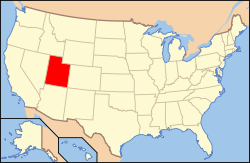
Bluffdale Utah probate law is complex. Speak to an experienced Bluffdale Utah probate lawyer to know more about the probate laws and procedures in Utah. You can pass on your properties to your children and other close relative through a will. Your will becomes effective on your death. Till then you continue to remain the owner of the properties but upon your death, the property will get transferred to the persons named in your will. If you die without a will, your property will not automatically pass on to your relatives. Instead the State of Utah will decide who gets what. In fact a part of your estate may end up in the hands of someone whom you never wanted to enjoy the benefits of your estate. Don’t let this happen to you. Consult an experienced Bluffdale Utah probate lawyer to prepare your will today. Once your will goes through probate, the persons named in the will become the owners of your estate.
Perhaps the most basic distinction is between real property and personal property. Real property is land and things permanently attached to the land. (Thus the origin of terms such as “real estate” and “Realtor.”) Personal property is everything else. Furniture, jewelry, and cars are personal property, but so are intangibles such as copyrights, patents, promissory notes, and stocks and bonds. Some types of property present difficult definitional issues–growing crops are sometimes real property, sometimes personal property–but for the most part the distinction between real and personal property is easy to understand.
Why we have the distinction and what it means are more complicated, though. In medieval times, as we have seen, land was not only an object of wealth but also the basis of a system of social organization. After the decline of feudalism, land still merited special treatment because it was the most widespread and important form of wealth and, as such, was subject to special procedural forms. For example, when Thomas Jefferson argued for the distribution of property as protection against tyranny, he meant the distribution of land among small farmers, in opposition to large dynastic landholdings.
Today the historical distinction between real and personal property, combined with the functional differences between property that doesn’t go anywhere and property that does, is seen in the different treatment of the different kinds of property. Separate bodies of law regulate each type of property, and many subcategories within each type. Selling a piece of land is governed by one body of law; selling a car is governed by another. The ways in which a landowner can use a piece of land is governed by several overlapping bodies of law, while the rights an owner has in a car or a copyright are different still.
As should be evident, some property is tangible and some is intangible. Indeed, land once was the most prevalent form of property, but now intangible property dwarfs real property in value and importance. The average family may own a car and a house, but they also may own a pension fund, some mutual funds, and bank accounts that far exceed the value of their tangible property. To know the properties that you can include in your will, speak to an experienced Bluffdale Utah probate lawyer.
A particular kind of intangible property is intellectual property, or property created through intellectual work rather than physical work. Patents and copyrights are intellectual property. A patent is the exclusive right to use, license, or sell an invention. When an inventor designs a better mousetrap (or, more realistically these days, when the research department of a large company creates a new drug), the inventor can apply to the government, proving the originality and usefulness of the invention, and be granted a patent which makes the invention the inventor’s property for a term of years. Similarly, when a novelist writes a book, she can submit a copy to the government, pay a fee, and be granted a copyright that creates a property interest in the work.
Trademarks are a kind of property related to intellectual property. Patents and copyrights are protected because they are original creations; trademarks are protected because they have commercial value. The name “McDonald’s” and the golden arches symbol have value because people associate them with McDonald’s fast food and all of the convenience, quality, and fun that the company tries to evoke with the images. Accordingly, the McDonald’s Corporation has a property interest in the name and the mark, although again the extent of the interest is different than other forms of property.
Intellectual property illustrates some very important points about property in general. First, when we think of property, it is easy to think that property is somehow naturally occurring, and the only issue is to how to allocate it. Land and trees have an existence that predates their allocation as property. But copyrights and patents should make clear that property is a product of the law. Without law, there would still be inventions and novels, but there would be no property rights in them. Because intellectual property is created and regulated by statute, it may be easier to see this than with property that has been allocated by centuries of common law rulings.
Second, intellectual property makes clear that there is no single conception of the ownership of property. Patents, copyrights, and trademarks are all forms of intellectual property, but the law governing them creates different interests with respect to each–a different bundle of rights. The duration of the property interest, for example, is twenty years for a patent, the life of the author plus seventy years for a copyright, and as long as it is commercially valuable for a trademark. In copyrights but not patents there is a concept of fair use, so that the copyright owner’s interest is not exclusive; a reviewer can quote part of a novel in a review, or a college professor can use a portion of it to illustrate a point in an English course. In each case, the law constructs what it means to own property, and the definition differs with respect to different kinds of property.
In property law, there are three kinds of concurrent estates, or forms of co-ownership at the same time: joint tenancy, tenancy in common, and tenancy by the entirety. In all three forms of co-ownership (or cotenancy), each tenant has the right to possess and use the entire piece of property. Tenancy by the entirety is unique in that it is only available to married couples, so there can only be two co-owners of a piece of tenancy by the entirety; a joint tenancy or tenancy in common can have an unlimited number of co-owners.
Today concurrent ownership is used in many situations. A wife and husband may have a joint checking account, mutual fund account, and may own their house jointly. (In jurisdictions which allow tenancies by the entirety–about half the states–that would be the form of ownership; otherwise, these would be joint tenancies.) Two siblings may own the family farm together. The copyright in a song may be held by the person who wrote the lyrics and the one who wrote the music.
Let’s take one example to see how the different forms of co-ownership work. This example focuses on joint tenancies and tenancies in common; for most purposes, a tenancy by the entireties is treated the same as a joint tenancy. Assume that two siblings inherited the house their parents had lived in. The first question in dealing with these instances of co-ownership is, what kind of co-ownership is it? The mother was the latter of the two parents to die, and her will said, “I leave my house to Juan and Maria, my children.” Are Juan and Maria joint tenants or tenants in common? Put more generally, in the absence of a designation by the original property owner, which form of co-ownership should the law prefer? The answer depends on the structure of property law and the underlying social conditions.
Under the estates system, joint tenants were seen as owning a single estate; when one of them died, the estate remained unchanged, and it was simply held by one fewer owner. Probably more importantly, the traditional property system favored concentrating ownership in a smaller number of large landowners, a purpose which joint tenancy served well. Joint tenancies also became effective estate planning devices, avoiding some of the feudal taxes that otherwise would be due on the transfer of property at death. By the eighteenth century, though, the presumption was otherwise. With the rise of a market economy and land viewed increasingly as a commodity and an object of wealth like any other, it made more sense to the legislatures and courts to prefer tenancies in common, which made property more freely transferable; a co-owner could transfer his or her share in property at death. Therefore, today Juan and Maria would be presumed to be tenants in common.
Of course, as in many legal situations, the best approach to this problem is to avoid it by good advance planning. The law permits people to specify what kind of relationship is being created, and good lawyers typically do so. If you open a bank account with a family member, for example, you will see that one of the boxes that can be checked to indicate the form of ownership is labeled “Joint tenant with right of survivorship,” a clear indication that the intention is not to create a tenancy in common. Scrupulous belt-and-suspenders lawyers may add “and not as tenants in common,” to remove any doubt. The attorney drafting the mother’s will likewise could have expressly provided for a joint tenancy, if that is what the mother intended.
What is it that a cotenant owns? Joint tenants and tenants in common hold substantially the same bundle of rights in the property. In either case, each cotenant possesses an undivided interest in the entire property. “Undivided” means that Juan and Maria each have a right to use the entire house; they do not have to physically divide the house, so that Juan has use of the kitchen and Maria the living room. If they rent out the house rather than live in it, they share in the rent paid equally (if they are joint tenants) or according to their ownership interests in the property (if they are tenants in common).
If Juan and Maria are tenants in common, on Juan’s death his heirs will inherit his interest in the property. If they are joint tenants, however, Maria owns the entire property on Juan’s death. If Juan wants to prevent this, so that his children can inherit the property, for example, he can, by various means, sever the joint tenancy, converting it into a tenancy in common and thereby destroying Maria’s right of survivorship. Tenancies by the entirety are different in this respect, however. Because one of the purposes of this form of co-ownership is to protect the surviving spouse, the right of survivorship cannot be destroyed in a tenancy by the entirety.
An important limitation on a spouse’s bundle of rights is a restriction on the ability to dispose of his or her property upon death. In Utah the ability of a spouse to dispose of property on death is limited by the rule of an elective share. The elective share operates somewhat like dower and curtesy at common law. No matter what a will says, the surviving spouse may claim a certain portion of the deceased spouse’s assets. The elective share provides a surviving spouse a measure of protection against being deprived of the financial benefits of the marriage.
It’s never to early to start estate planning. You don’t have to be rich and famous for estate planning. In fact everyone must have some estate planning device in place. This will ensure that their estate passes on to their near and dear ones once they are no more. A will is just one of the many estate planning devices. An experienced Bluffdale Utah probate lawyer can help you with estate planning.
Bluffdale Utah Probate Lawyer Free Consultation
When you need legal help with a probate in Bluffdale Utah, please call Ascent Law for your free consultation (801) 676-5506. We want to help you.
8833 S. Redwood Road, Suite C
West Jordan, Utah
84088 United States
Telephone: (801) 676-5506
Recent Posts
How Can I Get My House Back After Foreclosure?
Corporate Lawyer North Salt Lake Utah
Ascent Law LLC St. George Utah Office
Ascent Law LLC Ogden Utah Office
Bluffdale, Utah
|
Bluffdale, Utah
|
|
|---|---|

Bluffdale Fire Station in 2013
|
|

Location in Salt Lake County and the state of Utah.
|
|

Location of Utah in the United States
|
|
| Coordinates: 40°28′24″N 111°56′40″WCoordinates: 40°28′24″N 111°56′40″W | |
| Country | United States |
| State | Utah |
| County | Salt Lake, Utah |
| Founded | 1886 |
| Incorporated | October 13, 1978 |
| Named for | Bluffs (high cliffs) and dales (valleys) along the Jordan River |
| Government
|
|
| • Mayor | Derk Timothy |
| • City Manager | Mark Reid |
| Area | |
| • Total | 11.14 sq mi (28.86 km2) |
| • Land | 11.14 sq mi (28.85 km2) |
| • Water | 0.00 sq mi (0.01 km2) |
| Elevation
|
4,436 ft (1,352 m) |
| Population | |
| • Total | 17,014 |
| • Density | 1,527.29/sq mi (589.74/km2) |
| Time zone | UTC-7 (MST) |
| • Summer (DST) | UTC-6 (MDT) |
| ZIP code |
84065
|
| Area codes | 385, 801 |
| FIPS code | 49-06810 [3] |
| GNIS feature ID | 1425844 [4] |
| Website | bluffdale.com |
Bluffdale is a city in Salt Lake and Utah counties in the U.S. state of Utah, located about 20 miles (32 km) south of Salt Lake City. As of the 2020 census, the city population was 17,014.
From 2011 to 2013, the National Security Agency‘s (NSA) data storage center, the Utah Data Center, was constructed at Camp Williams in Bluffdale. It is approximately 1 million square feet in size.[5][6]
[geocentric_weather id=”404fb9c6-d4df-4872-80d2-dae4148453bf”]
[geocentric_about id=”404fb9c6-d4df-4872-80d2-dae4148453bf”]
[geocentric_neighborhoods id=”404fb9c6-d4df-4872-80d2-dae4148453bf”]
[geocentric_thingstodo id=”404fb9c6-d4df-4872-80d2-dae4148453bf”]
[geocentric_busstops id=”404fb9c6-d4df-4872-80d2-dae4148453bf”]
[geocentric_mapembed id=”404fb9c6-d4df-4872-80d2-dae4148453bf”]
[geocentric_drivingdirections id=”404fb9c6-d4df-4872-80d2-dae4148453bf”]
[geocentric_reviews id=”404fb9c6-d4df-4872-80d2-dae4148453bf”]



